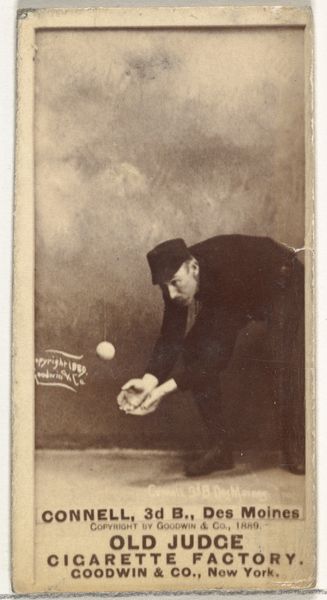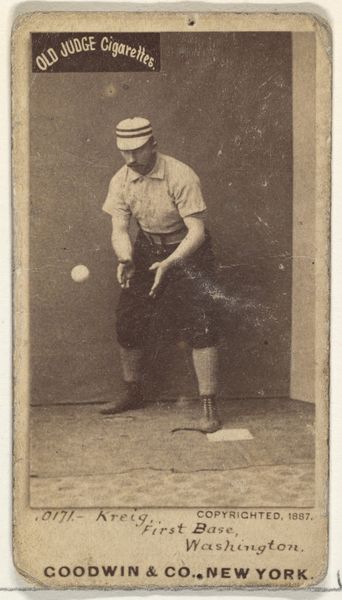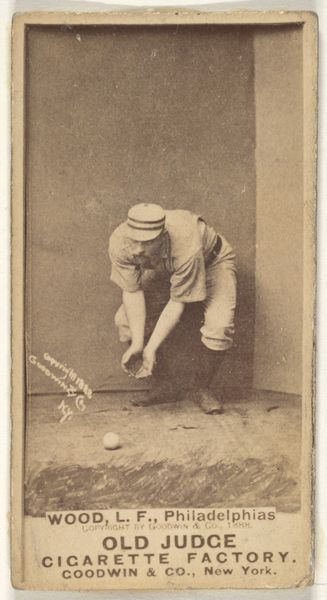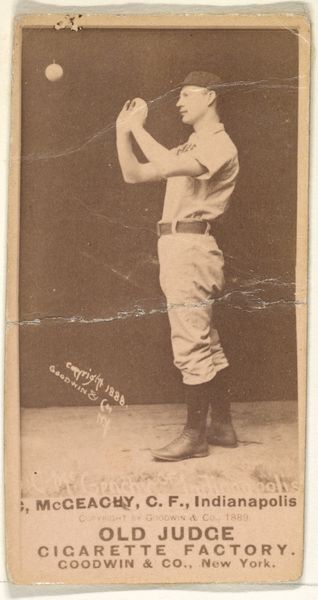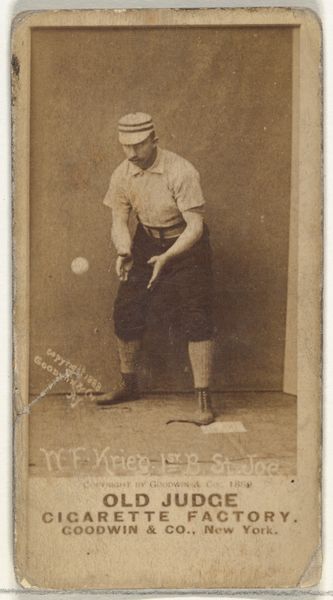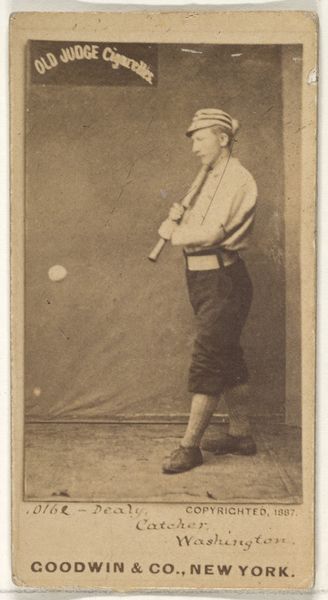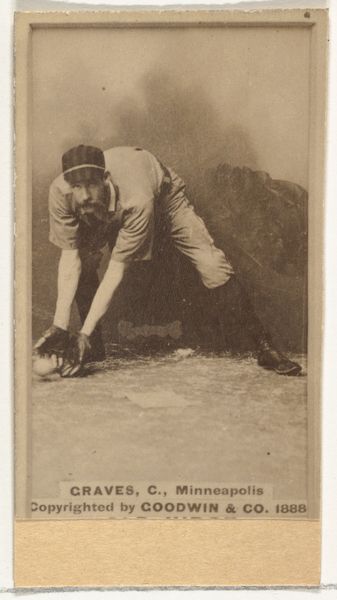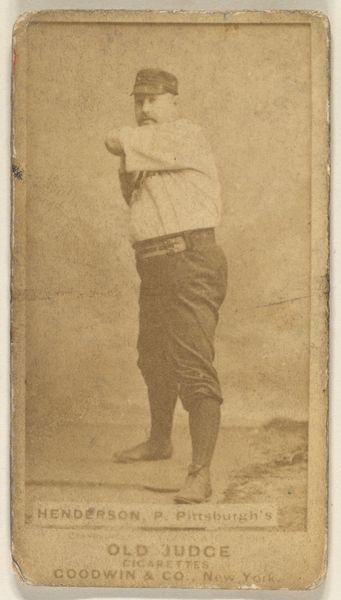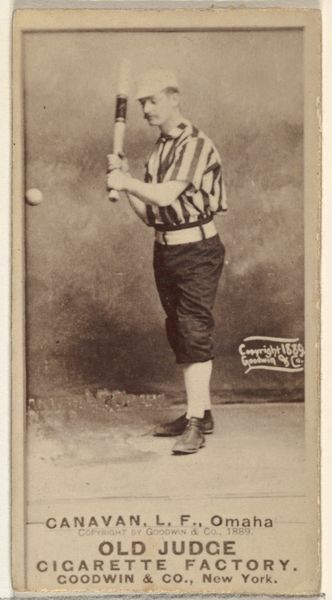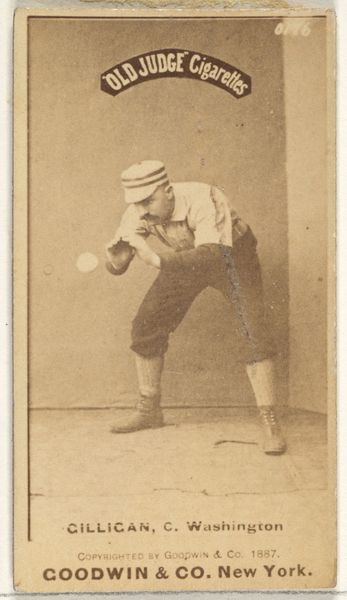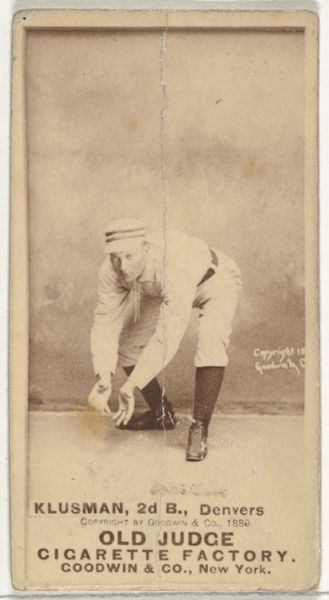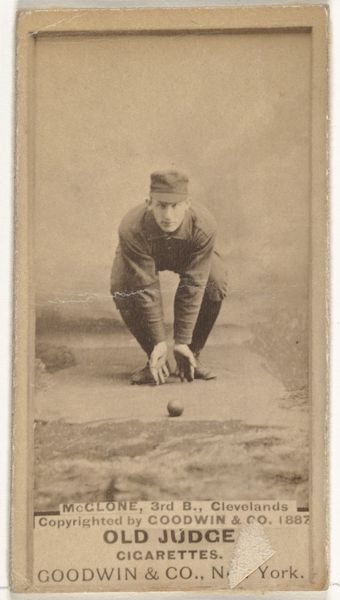
Michael J. Cody, Catcher, Des Moines Prohibitionists, from the Old Judge series (N172) for Old Judge Cigarettes 1889
0:00
0:00
Dimensions: sheet: 2 11/16 x 1 3/8 in. (6.9 x 3.5 cm)
Copyright: Public Domain
Editor: So, this is a baseball card, “Michael J. Cody, Catcher, Des Moines Prohibitionists,” from 1889. It’s from the Old Judge Cigarettes series. It feels really different from what I'd consider fine art. I’m curious what makes this photograph significant in an art historical context? Curator: Well, let’s consider the context of production. This wasn’t made as 'high art.' These cards were churned out en masse by Goodwin & Company to sell cigarettes. Think about the labor involved. Someone had to pose, someone had to take the photo, and many, many hands were involved in printing these cards in huge quantities. The image of Cody became a commodity. Editor: That makes sense. It’s essentially early advertising then. So the value isn't necessarily in its aesthetic quality but in its function? Curator: Exactly! The aesthetic itself becomes secondary to its purpose as a vehicle for selling tobacco. Think about the materiality as well: cheap paper stock, mass-produced inks. It all speaks to consumption and how images become implicated in a wider system of capitalist production and distribution. Also, the image creates value for baseball and the concept of professional athleticism at the time. Editor: It’s interesting to think about it that way, as a mass-produced object tied to labor and consumption rather than just a pretty picture. Is there a difference then between the consumption of the Cigarette card and that of "high art" in a gallery? Curator: That is an astute observation. One has many social factors while the other (fine art) hides those social dynamics from easy observation. Now what did you take away from this discussion? Editor: I hadn't considered how commercial these types of portraits used to be, but analyzing this card with a focus on the process really helped me appreciate its historical and cultural context. Curator: Precisely! And that understanding enriches how we interpret visual culture, past and present.
Comments
No comments
Be the first to comment and join the conversation on the ultimate creative platform.
